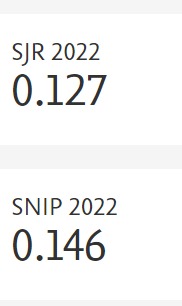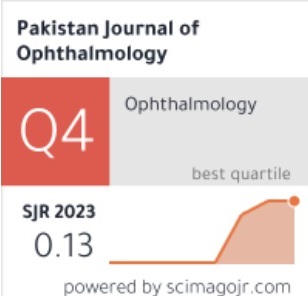Effect of Pulse Mode Phacoemulsification on Corneal Endothelium Using Different Frequencies
10.36351/pjo.v39i1.1488
DOI:
https://doi.org/10.36351/pjo.v39i1.1488Abstract
Purpose: To determine a safer mode using two different frequencies (10 and 60 pulses per second) in pulse mode phacoemulsification in moderate to severe cataract.
Study Design: Quasi experimental study.
Place and Duration of Study: Khatam-Al-Anbia Hospital, Mashhad, Iran, from 2017 to 2018.
Methods: We enrolled 145 patients with moderate and severe cataracts according to lens opacities classification system III (LOCS III). They were allocated to two different groups with different frequencies of pulse mode (10 PPS and 60 PPS) phacoemulsification. Post-operative parameters, including best-corrected visual acuity, corneal edema, endothelial cell density, central corneal thickness, and effective phaco time, were compared between the groups.
Results: Patients who had undergone surgery using 10 PPS pulse mode had better vision than those in the 60 PPS pulse mode group. Pulse mode with 10 PPS caused 0.112 reductions in log MAR in best-corrected visual acuity compared with the 60 PPS pulse mode group (p value = 0.001). The difference in corneal edema was significant between 10 and 60 PPS groups on the first and seventh days post-operatively (p-value < 0.0001). One month after surgery, corneal thickness increased in both groups and statistically more in 60 PPS group (p-value
< 0.0001).
Conclusion: Pulse mode with lower frequency in moderate and hard cataracts preserves endothelial cells from damage. The mean effective phaco time is less with ten pulses per second pulse mode.
Downloads
Published
How to Cite
Issue
Section
License
Copyright (c) 2022 Shahram Bamdad , Alireza Eslampoor , Hamed Tabesh , Soheyla Jafarpour, Mehrnoosh Maalhagh , Akbar Derakhshan

This work is licensed under a Creative Commons Attribution-NonCommercial 4.0 International License.






